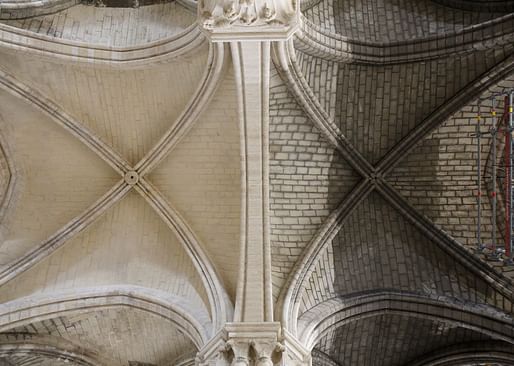

The current cleaning phase involves the application of a latex paste to the interior stonework. After a few days, the latex can be peeled off, bringing with it accumulated dust and dirt. Speaking to The Times in September Philippe Villeneuve, the chief architect of French national historic monuments, said that once completed the cathedral would be “luminous”. — The Art Newspaper
The peel-off material is similar to the Arte Mundit product that was used controversially in a restoration of St. Paul’s Cathedral in London 20 years ago, although The Art Newspaper reported it does not include the EDTA or harmful ammonia that is often mixed in with latex as a stabilizer.
The “shock” described by the restoration's leader, French Army General Jean-Louis Georgelin, that comes after its removal could prove too much for hardcore originalists, combing with equally derided LED lighting and other new age interior features designed by Father Gilles Drouin to create a Disney-like atmosphere they claim is a distortion of the 850-year-old relic and the Catholic tradition.
“The really important questions in restoration are not, in essence, technical, they are aesthetic and historic and artistic,” ArtWatch UK director Michael Daly told The Times. “The question at Notre Dame, as at St Paul's, is whether there is any good basis for wishing to present an artificially brightened and ahistorical white interior.”
Are you sure you want to block this user and hide all related comments throughout the site?
No Comments
Archinect
This is your first comment on Archinect. Your comment will be visible once approved.